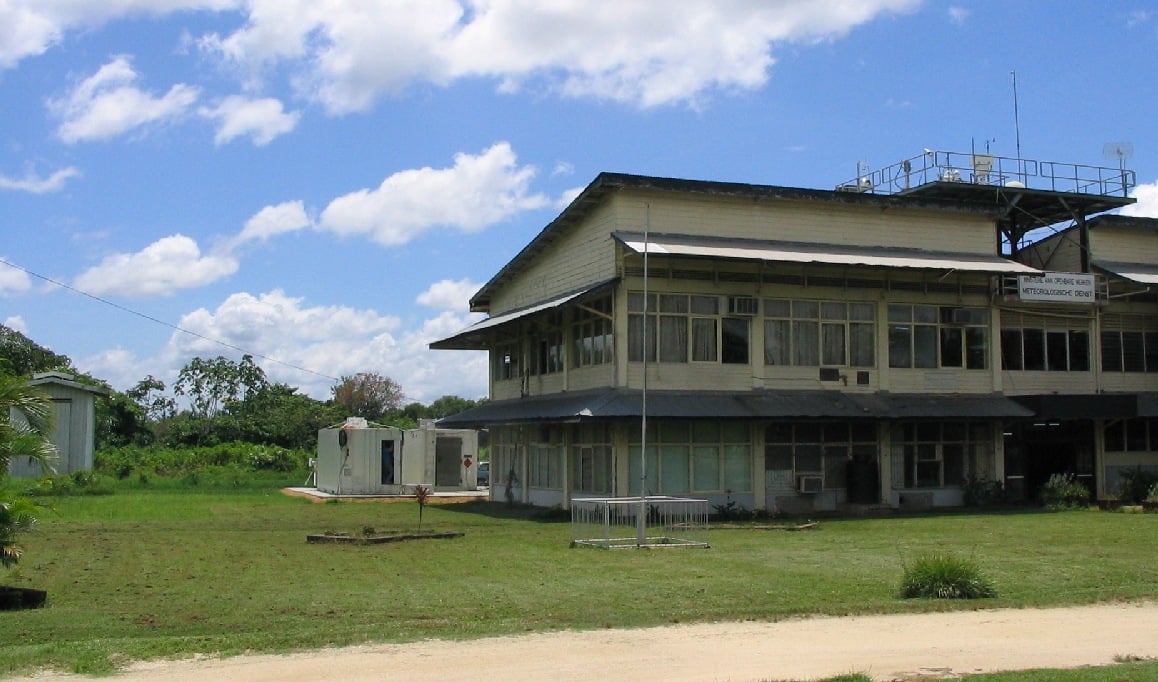Paramaribo station was established in 1999, under a grant from the Foundation for Netherlands Scientific Research (NWO), as a joint initiative of the Royal Netherlands Meteorological Institute (KNMI) and the Meteorological Service of Surinam (MDS). The stations principal investigator is Ankie Piters.
Staff
The observation program of Paramaribo station is kept operational by an MDS operator team, under supervision of station co-founder Cor Becker and MDS director Sukarni Sallons-Mitro.
Operator team on the instrument platform, from left to right: Gajadhar Sewdien, Cheryll Tjon A Ten, Dennis Rodrigues (in front), Etto Zerp, Sukarni Sallons (current director of MDS), Firoz Amierali
Location
The site is located in Paramaribo, the capital of Suriname at the northern coast of South America. Although it lies on the south-western edge of the city, it is still in a relatively pristine environment due to its close proximity to the ocean and to the Amazone forest, which stretches all the way past the southern borders of Suriname.
A further advantage of the site is the relatively flat orography on this part of the South American continent, leaving the background atmosphere relatively unperturbed as it is advected by the easterly trade winds over this location. This is especially useful for tracing the atmospheric composition, measured at the site, back to its regions of origin.
Wet and dry seasons
What makes this site particularly interesting from a scientific viewpoint is the fact that the Inter-Tropical Convergenze Zone (ITCZ) - a cloudy band near the Equator where tropospheric air from the two Hemispheres converges - migrates twice a year over Surinam. The ITCZ here is well discernable, as can be illustrated with rainfall statistics over Paramaribo. These show a distinct increase during the months when the ITCZ lies overhead (December-January, April-July), with dry seasons in between. Hence this station supports the study of atmospheric features associated with the Northern as well as the Southern Hemisphere, and in addition, the features which are unique to the ITCZ itself.
